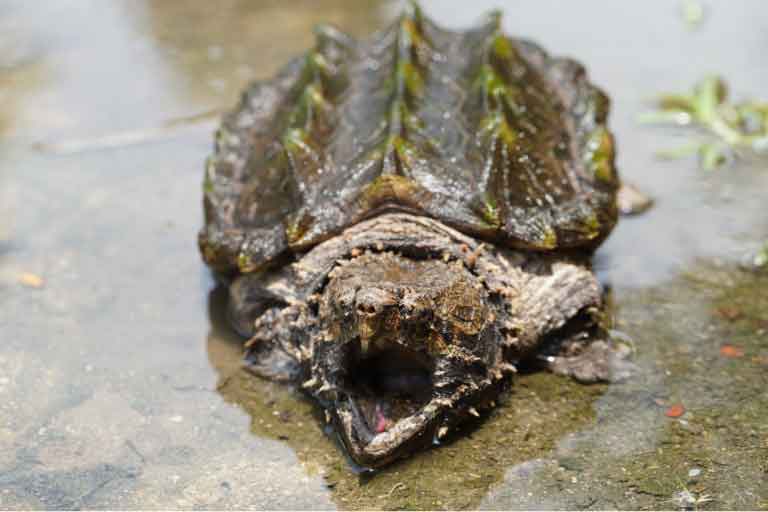Do Turtles Need a Companion? | Understanding Turtle Behavior & Boredom
When I first became a turtle owner, I found myself wondering something that probably crosses every beginner’s mind: “Is my turtle lonely?” After all, they spend a lot of time alone, just swimming, basking, or resting in their hide. Compared to a dog or a parrot, turtles seem quiet, even emotionally distant. So naturally, I…
When I first became a turtle owner, I found myself wondering something that probably crosses every beginner’s mind: “Is my turtle lonely?” After all, they spend a lot of time alone, just swimming, basking, or resting in their hide. Compared to a dog or a parrot, turtles seem quiet, even emotionally distant.
So naturally, I thought, Should I get another one? Will it make my turtle happier? What I discovered—and what I want to share with you now—is that turtles don’t quite function like the pets we’re used to. And that misunderstanding can lead to problems, both for your current turtle and any new one you might bring in.
Let’s talk about what loneliness means for reptiles, how turtles behave in solitude vs. in groups, and what you can do to make your single turtle’s life healthy, enriching, and full of stimulation—without ever needing a tankmate.
Are Turtles Social or Solitary in Nature?
This is the starting point for everything. Most pet turtles—like red-eared sliders, painted turtles, cooters, and musk turtles—are solitary animals by nature. In the wild, they don’t form tight-knit family groups or social bonds. They don’t play, cuddle, or groom each other. Their social interaction is usually limited to competition for basking spots or brief mating encounters.
When you see a group of wild turtles piled on a log, it’s not because they’re buddies. It’s just because that log happens to be a prime basking spot. If another log were open, they’d gladly go there instead.
So when we talk about whether turtles need a “companion,” we have to stop projecting human feelings onto them. Turtles don’t get emotionally attached in the same way dogs or even cats might. They don’t crave company—they crave stability, safety, and the right environmental conditions.
Do Turtles Get Lonely?
Not really—at least not in the emotional sense. They don’t sit around missing a tankmate or longing for attention. But here’s the important distinction: they can get bored or under-stimulated, especially in captivity.
I learned this the hard way. For a while, I had a very minimal tank setup—clean, functional, but dull. No plants, no tunnels, no toys. My turtle stopped exploring, stayed in the corner, and barely reacted to anything. He wasn’t “lonely”—he was just mentally unstimulated.
Once I added enrichment features—like new hiding spots, floating plants, and different textures—he perked right up. Started swimming more, basking with purpose, even reacting when I walked by.
So while turtles don’t need a friend, they do need engagement.

The Truth About Keeping Two Turtles Together
This is where things can get complicated—and where a lot of turtle owners (my past self included) run into trouble. While it might seem like a good idea to add a second turtle “for company,” the reality is that keeping multiple turtles in one tank often creates more problems than it solves.
Turtles are territorial. They want their own basking area, swimming space, and feeding zone. And if they don’t get it? That’s when the pushing, biting, and stress begin.
What Happens When You Force Companionship?
I once introduced a second turtle—a same-size female slider—into what I thought was a large enough tank (75 gallons). Within days, the first turtle started lunging during feeding time. The second one stopped basking entirely. I found bite marks on her front legs and noticed she was barely swimming. She just stayed tucked in the corner.
This wasn’t aggression for fun—it was resource competition. Turtles don’t play. They assert dominance, especially when they feel like something is being taken from them—space, heat, food, or security.
When Can Turtles Live Together Peacefully?
Occasionally, two turtles can share a tank without conflict, but several conditions must be met:
1. Adequate Tank Size
This is non-negotiable. Most adult aquatic turtles need a minimum of 75–100 gallons each. For two turtles, you’re looking at 150–200 gallons, plus strong filtration and enough basking platforms.
Anything less almost always leads to stress or aggression.
2. Gender Pairing Matters
- Two males: Often a disaster. They’ll compete and fight.
- Male + Female: Can lead to harassment or overbreeding.
- Two females: Usually the safest combo if the tank is big enough.
3. Species Compatibility
Some species are just more mellow. Musk turtles and mud turtles, for example, tend to be more tolerant (but still require space). Red-eared sliders? Far more dominant and harder to pair.
My advice: Never mix species unless you’ve done deep research on their behavior, size, and habitat needs. Even then, monitor them closely.
4. Feeding and Basking Must Be Equal
If one turtle always eats first, always basks, and the other hangs back—it’s not just a coincidence. It’s hierarchy. And that’s a big warning sign. I’ve seen turtles starve this way because they’re too intimidated to eat.
Tips that helped me:
- Use a second feeding area to reduce competition
- Add a second basking dock, ideally out of sight of the first
- Watch them closely for the first several weeks (and separate at the first sign of injury)
How to Enrich a Solo Turtle’s Life (Without a Companion)
If you decide—wisely—that your turtle is better off alone, that doesn’t mean their tank should be boring or basic. Turtles need variety, exploration, and mental stimulation to thrive. Here’s what I’ve done (and continue doing) to keep my turtle curious, active, and engaged without needing a tankmate.
1. Create a Dynamic Environment
Think of your turtle’s tank as their entire world. If it never changes, they’ll stop exploring. So:
- Rearrange decor every few weeks—move logs, shift plants, rotate rocks
- Add different basking textures (wood, slate, cork bark)
- Include floating objects that move with water current
- Provide at least one hideout underwater and one above
My turtle LOVES when I add something new. He’ll swim over, sniff it with his nose, circle it, even bite it to “test” it.
2. Use Food as a Learning Tool
Don’t just dump pellets in the water—make feeding interactive.
- Drop food in different locations each time
- Use a floating feeder ring
- Hide treats (like shrimp or greens) inside small caves or between rocks
- Occasionally hand-feed with tweezers to build trust
This turns feeding time into a search-and-find game that keeps your turtle mentally sharp.
3. Provide Visual and Behavioral Stimulation
Turtles can see movement outside their tank. I often sit nearby and let mine watch me read, work, or clean. Over time, he started responding to my presence. He now comes to the glass when he sees me walk in.
- Keep the tank in a location where there’s gentle, regular movement
- Talk to your turtle in a calm voice—they can’t understand words, but they recognize tones and rhythms
- Add natural background lighting (but not direct sunlight) to match the day/night cycle
FAQs
1. Do turtles get lonely?
No. Turtles are solitary and do not experience loneliness the way mammals do. They don’t need friends—but they do need stimulation and environmental variety.
2. Can two turtles ever bond?
Not in the emotional sense. Turtles don’t form lasting social bonds. If two tolerate each other, it’s usually just that—tolerance, not affection.
3. What if I already have two turtles that get along?
If you’re lucky enough to have a peaceful pair, that’s great—but keep monitoring them. Turtles’ behavior can change with age, growth, or health issues. A fight might break out months later.
Final Thoughts
Turtles are fascinating, ancient creatures. They might not wag their tails or purr when they see you—but they absolutely have personalities, preferences, and behaviors that deserve attention and respect.
So no—your turtle doesn’t need a companion. What they do need is a well-designed tank, good lighting, a balanced diet, and an observant keeper who pays attention to subtle signs of stress or boredom.
I’ve found that one turtle, in a space designed just for them, is not only easier to care for—but often happier. And once you tune into their quiet, deliberate way of living, you’ll see just how much is going on behind that still shell.







